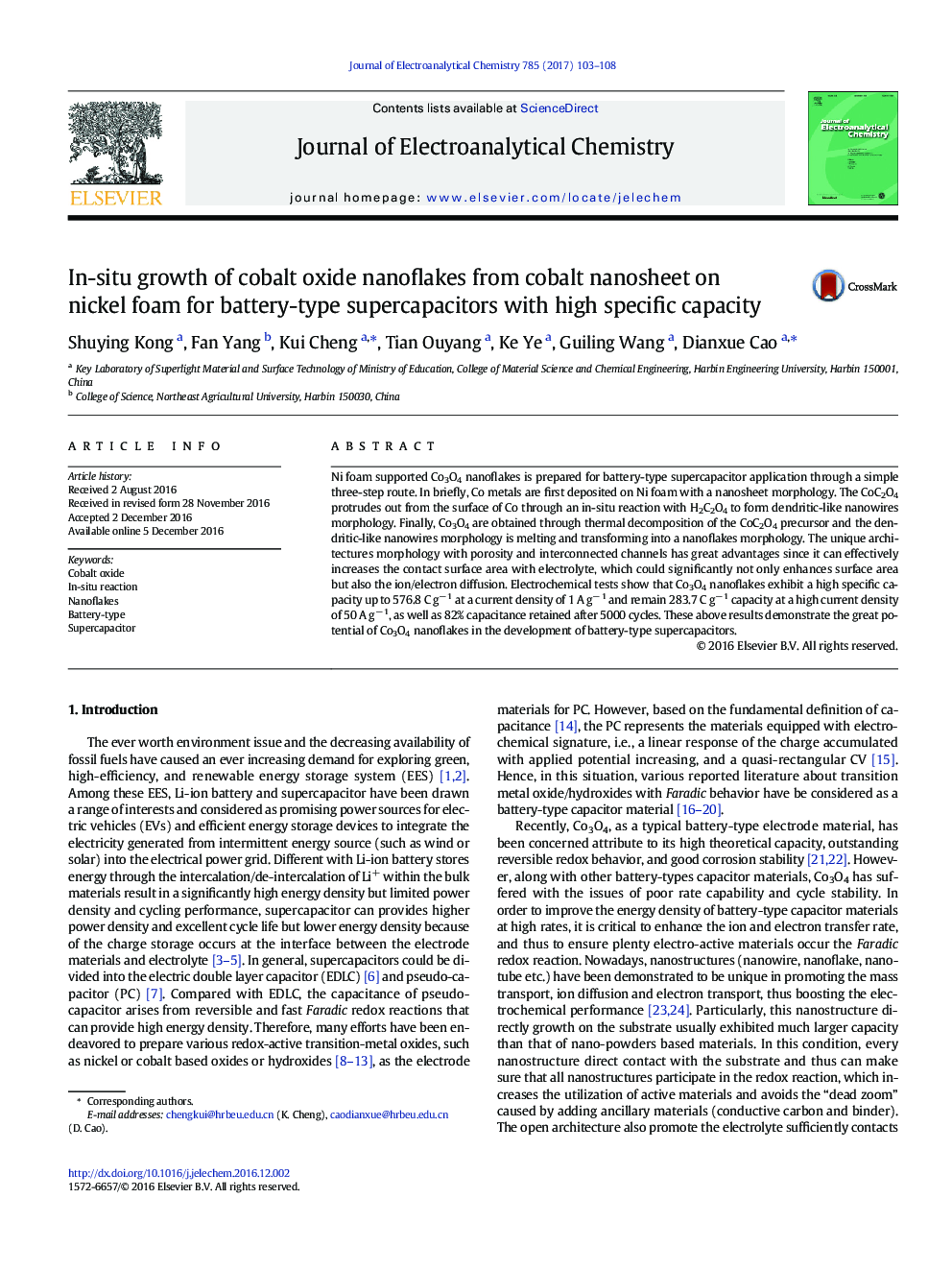| Article ID | Journal | Published Year | Pages | File Type |
|---|---|---|---|---|
| 4908079 | Journal of Electroanalytical Chemistry | 2017 | 6 Pages |
Highlightâ¢Porous Co3O4 nanoflakes are prepared for battery-type supercapacitor application.â¢The three-step synthesis route includes electrodeposition, in-situ reaction and calcination.â¢Co3O4 nanoflake exhibits a specific capacity as high as 576.8 C gâ 1 at 1 A gâ 1.â¢A remarkable cycling stability with 82% capacity retained is obtained.
Ni foam supported Co3O4 nanoflakes is prepared for battery-type supercapacitor application through a simple three-step route. In briefly, Co metals are first deposited on Ni foam with a nanosheet morphology. The CoC2O4 protrudes out from the surface of Co through an in-situ reaction with H2C2O4 to form dendritic-like nanowires morphology. Finally, Co3O4 are obtained through thermal decomposition of the CoC2O4 precursor and the dendritic-like nanowires morphology is melting and transforming into a nanoflakes morphology. The unique architectures morphology with porosity and interconnected channels has great advantages since it can effectively increases the contact surface area with electrolyte, which could significantly not only enhances surface area but also the ion/electron diffusion. Electrochemical tests show that Co3O4 nanoflakes exhibit a high specific capacity up to 576.8 C gâ 1 at a current density of 1 A gâ 1 and remain 283.7 C gâ 1 capacity at a high current density of 50 A gâ 1, as well as 82% capacitance retained after 5000 cycles. These above results demonstrate the great potential of Co3O4 nanoflakes in the development of battery-type supercapacitors.
